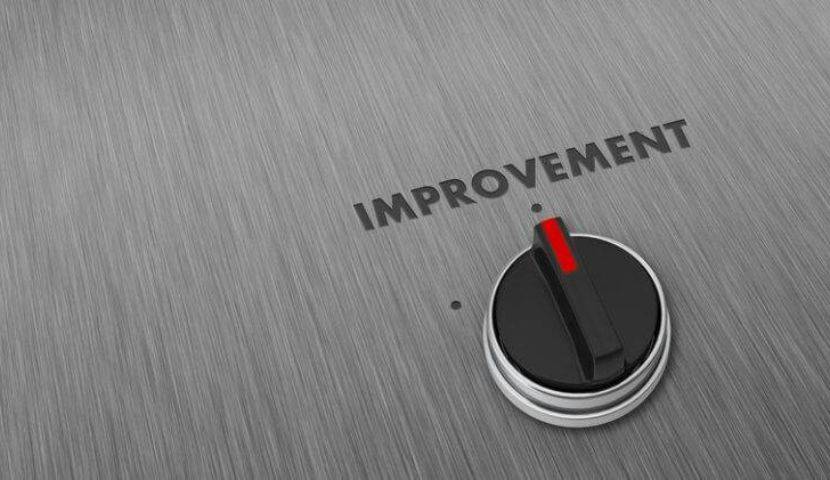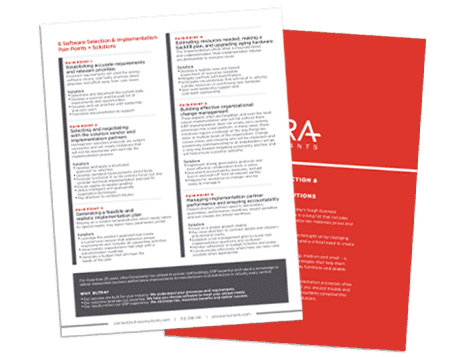Project teams often enter into technology selection and implementation as the first steps in realizing true ERP business transformation.
Enterprise technology, with ERP as a foundational technology, plays a big role in those transformations.
Often companies new to modern ERP systems get easily overwhelmed with the technology landscape and narrow the scope to implement a portion of the functionality that they purchased.
These challenges were addressed in a prior post entitled “Considering a new ERP system? Don’t be easily impressed,” As the post noted, today’s modern systems dazzle and impress, but not all systems are the right fit for your business. The most impressive features may actually be common among most systems

3 Roadblocks to True ERP Business Transformation
In our experience, we see a variety of reasons for this approach.
- Resource Constraints: It could be that the manufacturer or distributor is challenged to find the right resources to enter a full digital transformation. Budget, time and staffing are all at a premium with competing priorities.
- Technology Overload: If teams jump right to enterprise technology demos, such as viewing demos of ERP for example, they can get overwhelmed with the “bells and whistles” of today’s systems. Today’s ERP offers functionality they didn’t have before and might have never known existed. In fact, many of the teams we speak with call us in at this point of the evaluation, to help make sense of the solutions, features, and functions and technology platforms now available in the marketplace.
- Resistance to Change: Depending on the maturity of the organization, and the experience of staff, it is could be that the majority of the organization is simply not ready for drastic changes in processes. Functional teams might hang onto existing processes because they perceive change as risky and too much work. This is where organizational change management comes into play, to set up processes and systems to counter user resistance.
Instead of achieving ERP business transformation for sustained improvements, it’s common for teams to focus on short term results. Generally, the mission is to get live on new technology, up and running with a new system and achieve stability right away. What project doesn’t have the Goal of “On Time, On Budget” and “Minimal Impact to Business”?
But after the dust settles, is the organization satisfied with the results?
Most teams are just glad they survived and it’s over. Unfortunately, it is at this point that teams realize they spent precious resources to basically implementing a system that does much of the same things they did before, with only some improvements and additional functionality.
A Better Approach To Driving Transformation
So what is being transformed when an organization adds new technology on top of existing processes? Not much, unless the focus is on transforming business process improvement.
As an independent ERP consultant team, we take a different tactic when it comes to true transformation. Each of Ultra’s engagements maximizes the value of each enterprise technology evaluation, selection, and implementation, and drives business process transformation.
We do this by taking the time to define the right processes, ensuring they are effectively used throughout the project, avoiding the pitfalls common to ERP selections, evaluations and implementations. That’s the path to ERP business transformation.
Transforming your business processes, with an ERP system as a technology enabler, requires creating a vision of the future state from the current state – and then on to defining the business value for the project.
When business process improvement is done properly, this foundation will establish alignment of expectations with management, improve the efficiency of the project team, eliminate process waste, and reduce the time to benefit for the project.
With projects beginning to address the low-hanging fruit and understanding the potential offered by modern ERP systems, the team can define the future state by reviewing in detail the current state process maps covering cross-functional processes.
Beyond looking at wasteful practices that currently exist, the team should discuss what processes are currently done outside the formal system or what types of value-adding activities could be brought in-house.
The “secret” comes into play by thoroughly documenting the future state process and communicating the newly designed process to the rest of the organization in formal sessions.
6 Software Selection & Implementation Pain Points + Solutions
Software selection and implementation processes often present challenges of their own. To steer you around trouble and help you drive success, Ultra’s experts compiled a list of pain points and solutions to be aware of as you embark on this journey.

Table of Contents
More ERP material...
AI in Food and Beverage Manufacturing
Discover how AI is revolutionizing food and beverage manufacturing, enhancing quality, reducing…
How ERP for Quality Control Eliminates Manual Documentation Chaos
This post will examine why managing quality records outside of an ERP…
Assessing Your AI Maturity
This article breaks down how businesses can measure their AI maturity to…



